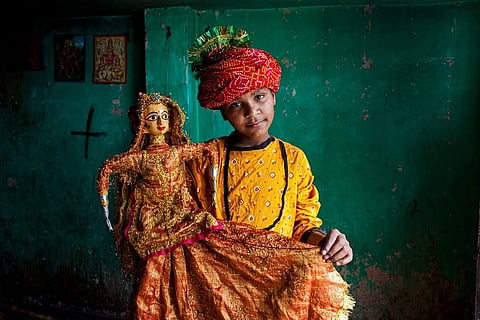
- Destinations
- Experiences
- Stay
- What's new
- Celebrating People
- Responsible Tourism
- CampaignsCampaigns
- Subscribe
- Buy Now

Nestled in West Delhi's Shadipur Depot neighbourhood, Kathputli Colony has long been a thriving hub for traditional Indian street entertainers. For more than 50 years now, magicians, acrobats, musicians, puppeteers and other artists have been performing variously in this neighbourhood of Delhi, preserving centuries-old customs and artistic traditions. Lately, however, with grand proposals for redevelopment and urban upliftment, this colourfully distinctive neighbourhood is confronted with an uncertain future.
Kathputli Colony was founded in the 1950s as a community for Rajasthani puppeteers—kathputli in Hindi means "puppet." It eventually attracted a wide range of entertainers from all over India, such as jugglers, snake charmers, mendicants and other showmen. It might appear as an ordinary detail but at that point, the colony was the largest community of street performers in the world, housing some 2,800 families at its peak. These performers showcased India's rich cultural legacy on international stages in addition to providing entertainment for local audiences.
Together with Raheja Developers, the Delhi Development Authority (DDA) started an in-situ reconstruction project for Kathputli Colony in 2010. In order to provide 2,800 homes for the resident families, the design called for replacing the current settlement with multi-story apartments. However, there were setbacks and issues with the project, such as disagreements over eligibility and questions about whether high-rise apartments are suitable for actors who need room to practise and store props.
The relocation of residents to transit camps disrupted the very social fabric of the community and posed several challenges to their traditional lifestyles. Many artists found it difficult to cope with new environments, leading to a dramatic decline in performances and massive loss of income. At the heart of the suffering, the shift particularly threatened the intergenerational transmission of skills, as younger members faced obstacles in learning and practicing their crafts in the face of mounting practical demand of finding sustainable jobs.
Despite the challenges, efforts have been made to preserve the colony's cultural legacy. Documentaries like "Tomorrow We Disappear" have brought international attention to the community's plight. Additionally, some residents have advocated for the establishment of a dedicated cultural space within the redevelopment plan to continue their artistic traditions.
According to recent sources, the DDA intends to distribute apartments to qualified residents as the reconstruction project draws to a close. Even if this is a big start in the right direction, it's still unclear if Kathputli Colony's artistic legacy will last over the long run. It will be essential to strike a balance between urban expansion and cultural preservation in order to guarantee that this community's distinctive legacy is preserved for upcoming generations.
